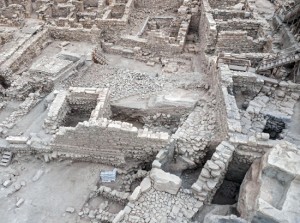×


We have detected your country as:
Please click here to go to the USA website or select another country from the dropdown list.
 Some years back, the ruler of a superpower set up headquarters in Jerusalem. Near the Temple courts he constructed a massive fortress. From its ramparts, he held Jewish rebels at bay, launching spears and slinging metal slugs emblazoned with symbols and inscriptions representing favorite deities.
Some years back, the ruler of a superpower set up headquarters in Jerusalem. Near the Temple courts he constructed a massive fortress. From its ramparts, he held Jewish rebels at bay, launching spears and slinging metal slugs emblazoned with symbols and inscriptions representing favorite deities.
Determined to convert the Jews, and if not to squash them, Antiochus IV Epiphanes reveled in his mission to Hellenize Israel and to do so from its heart, from Jerusalem. With virtually no effort, he subdued the city and its Temple in the name of Zeus, boasting his omnipotence.
Two thousand years later, however, Epiphanes’ fortress [Acra] was flattened and his deities fictionalized. But the God of Abraham, Isaac and Jacob remained. If not worshiped, He was still known throughout the world. And once again Jerusalem was the capital city, the holy city, of the Jews.
Where were the impenetrable walls that Antiochus Epiphanes once built and from which he gleefully tormented the Jews, mocking their God? There was a lot of speculation, but nobody knew. Recently, the world learned that Antiochus’s fortress had become a parking lot, and a grubby one at that.
Located just south of the Temple Mount there was a pay-by-the-day slab of pavement called Givati Parking. Now known as the northern sector of the City of David, biblical Jerusalem’s most ancient site, the lot began to be excavated in 2007.
There was a lot of mystery as to exactly why this sector held so much residue of life, much of it not Jewish. According to the site’s chief archaeologist, Dr. Boron Ben-Ami, the slowly dawning awareness of what the evidence revealed became a “sensational discovery.” Like pieces of a jigsaw puzzle, everything finally fit. When put together, what they revealed was the Acra of Antiochus Epiphanes.
“For the first time,” says Ben-Ami, “this discovery allows us to reconstruct the layout of the [Acra] settlement on the eve of the Maccabean uprising in 167 BC…This is the stronghold that controlled all means of approach to the Temple atop the Temple Mount, and cut the Temple off from the southern parts of the city. The numerous coins ranging in date from the reign of Antiochus IV to that of Antiochus VII and the large number of wine jars (amphorae) that were imported from the Aegean region to Jerusalem, which were discovered at the site, provide evidence of the citadel’s chronology, as well as the non-Jewish identity of its inhabitants.”
Source: Excerpts of article by Brian Schrauger, Bridges for Peace
Photo Credit: Ashernet/IAA
All logos and trademarks in this site are property of their respective owner. All other materials are property of Bridges for Peace. Copyright © 2024.
Website Site Design by J-Town Internet Services Ltd. - Based in Jerusalem and Serving the World.